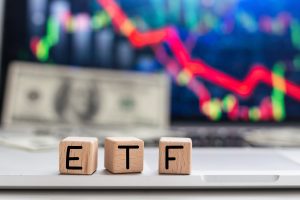Introduction
Gold has long been regarded as one of the most valuable and sought-after precious metals in the world. Its unique properties, such as its durability, scarcity, and lustrous appearance, have made it a popular choice for various purposes, including jewelry, investment, and industrial applications. The price of gold is influenced by numerous factors and is subject to fluctuations in the global financial markets.
Investors and traders closely monitor the price of gold as it often serves as a barometer of economic and geopolitical uncertainties. In times of economic instability or when investors seek a safe haven, the demand for gold tends to increase. Conversely, during times of economic prosperity or when there is high confidence in the financial markets, the demand for gold may decrease.
Gold prices are influenced by several key factors, including supply and demand dynamics, inflation rates, interest rates, currency movements, and global economic conditions. Changes in any of these factors can have a significant impact on the price of gold.
Additionally, global geopolitical events, such as political tensions, wars, and natural disasters, can also drive investors towards gold as a safe haven asset. This increased demand for gold during uncertain times can lead to significant price movements.
The gold market is a complex and dynamic one, with prices constantly changing. Gold can be traded in various forms, including spot trading, futures contracts, and exchange-traded funds (ETFs). Understanding the different ways to trade gold and keeping up with the latest market trends and news is crucial for investors and traders looking to profit from gold price movements.
This article will explore the factors affecting the price of gold, current market trends, the history of gold prices, the difference between spot price and physical gold price, and strategies for trading and investing in gold.
Factors Affecting the Price of Gold
The price of gold is influenced by a variety of factors, including supply and demand dynamics, economic indicators, geopolitical events, and investor sentiment. Understanding these factors can help investors and traders make informed decisions when trading or investing in gold.
1. Supply and Demand: Like any other commodity, the price of gold is affected by the basic laws of supply and demand. When the demand for gold exceeds the available supply, prices tend to rise. Conversely, when supply exceeds demand, prices may decline. Factors that impact the supply and demand of gold include mining output, central bank buying and selling, jewelry demand, and investor demand.
2. Economic Indicators: Economic indicators, such as inflation rates, interest rates, and GDP growth, can influence the price of gold. When inflation is high or there are concerns about currency devaluation, investors often turn to gold as a hedge against inflation. Similarly, when interest rates are low, the opportunity cost of holding gold decreases, making it more attractive to investors.
3. Geopolitical Events: Geopolitical tensions and global events can have a significant impact on gold prices. Political instability, wars, trade disputes, and natural disasters can shake investor confidence in the financial markets and increase the demand for safe-haven assets like gold. During uncertain times, gold often serves as a store of value and a safe investment option.
4. Investor Sentiment: Investor sentiment plays a crucial role in determining the price of gold. Positive sentiment and confidence in the financial markets may lead to decreased demand for gold. On the other hand, negative sentiment and fear of economic downturns or market volatility can drive investors towards gold as a safe-haven investment, resulting in increased demand and higher prices.
5. US Dollar: The relationship between gold prices and the US dollar is inverse in nature. As the US dollar strengthens, gold becomes relatively more expensive for holders of other currencies, leading to a decrease in demand and lower prices. Conversely, when the US dollar weakens, gold becomes cheaper for holders of other currencies, driving up demand and increasing prices.
6. Market Speculation: Speculative trading and investment activities can also impact the price of gold. Speculators, such as hedge funds and institutional investors, often bet on short-term price movements, which can create volatility in the market. The actions and sentiments of these speculators can influence short-term fluctuations in gold prices.
It is important to note that the interplay between these factors is complex and can vary over time. Extensive research, analysis of market trends, and staying updated with relevant news and events are crucial for understanding and predicting the price movements of gold.
Current Market Trends
The gold market is constantly evolving, influenced by a variety of factors that shape current market trends. Understanding these trends can provide valuable insights for investors and traders looking to capitalize on the price movements of gold.
1. Increased Volatility: In recent years, the gold market has experienced increased volatility. This can be attributed to various reasons, including geopolitical tensions, economic uncertainties, and changing investor sentiments. The higher volatility presents both opportunities and risks for traders, as it allows for potential larger price swings.
2. Record High Prices: Gold prices reached record highs in 2020, reflecting the heightened global economic uncertainties caused by the COVID-19 pandemic. Investors turned to gold as a safe-haven asset, driving up demand and pushing prices to unprecedented levels. While prices have moderated since then, the potential for increased volatility can result in rapid price movements.
3. Shifts in Investor Sentiment: Investor sentiment towards gold can change rapidly based on economic news, geopolitical developments, and central bank actions. It is important to stay informed about current events and global economic indicators to anticipate shifts in investor sentiment and their potential impact on gold prices.
4. Increased Demand from Emerging Markets: Emerging markets, particularly in Asia, have been driving the demand for physical gold. Rapidly growing economies and rising disposable incomes in countries like China and India contribute to increased demand for gold jewelry and investment products. Understanding the demand patterns in these markets is crucial for assessing the overall demand-supply dynamics of gold.
5. Impact of Central Banks: Central banks play a significant role in shaping the gold market. Gold reserves held by central banks can impact the overall supply-demand balance of gold. Central bank purchases or sales of gold can influence prices and provide insights into their overall confidence in the global economy.
6. Increased Digital Gold Investing: The advent of technology has opened up new avenues for investing in gold. Digital platforms and exchange-traded funds (ETFs) allow investors to trade gold without physically owning it. These investment vehicles have gained popularity due to their convenience and accessibility, impacting the overall demand for physical gold.
7. Green Investing: Environmental, social, and governance (ESG) considerations are gaining importance in investment decisions. As sustainability and responsible investing become more prominent, there is an increased demand for ethically sourced and environmentally friendly gold. Investors are seeking assurance that gold mining practices are aligned with ESG principles.
It is essential to closely monitor these market trends and adapt trading or investment strategies accordingly. Analyzing market sentiment, conducting thorough research, and staying informed about global economic developments are key to effectively navigate the current trends in the gold market.
Gold Price History
The price of gold has a rich history that spans thousands of years. Gold has been valued for its rarity, beauty, and intrinsic worth since ancient civilizations. By understanding the historical price patterns of gold, investors and traders can gain insights into potential future price movements.
Ancient civilizations, such as the Egyptians and Greeks, used gold for decorative purposes, jewelry, and as a symbol of wealth and power. The value of gold was recognized across different cultures and was often used as a medium of exchange. However, it was in the 20th century that gold prices started to be actively traded on global markets.
During the Bretton Woods system from 1944 to 1971, the value of the US dollar was pegged to gold. This led to a fixed price of gold at $35 per ounce. However, in 1971, the US abandoned the gold standard, allowing the price of gold to fluctuate freely in the market.
Since then, the price of gold has experienced significant fluctuations. In the 1970s, geopolitical tensions and rising inflation resulted in a surge in gold prices. The price skyrocketed to an all-time high of $850 per ounce in 1980. However, over the next two decades, gold prices steadily declined, reaching a low of around $250 per ounce in 2001.
Starting in the early 2000s, gold entered a long-term bull market. A combination of factors, including low-interest rates, global financial crises, and economic uncertainties, drove investors to seek the safety of gold. Prices steadily rose, reaching new records in the following years.
The global financial crisis of 2008 was a turning point for gold. Investors sought refuge from the turmoil in the financial markets, leading to a surge in gold prices. Gold reached new highs, surpassing $1,900 per ounce in 2011.
Since then, gold prices have exhibited both upward and downward trends. It is important to note that gold prices are influenced by numerous factors, and historical patterns do not guarantee future performance.
In recent years, gold prices have shown resilience amid various global uncertainties, including trade wars, geopolitical tensions, and the COVID-19 pandemic. As a safe-haven asset, gold has gained popularity among investors looking to diversify their portfolios and hedge against risks.
Understanding the historical price movements of gold serves as a valuable reference for traders and investors. It provides insights into market cycles, potential support and resistance levels, and the broader trend of gold prices over time.
It is important to conduct thorough research and analysis, considering various fundamental and technical factors, to make informed decisions when trading or investing in gold.
Spot Price vs. Physical Gold Price
When it comes to buying or investing in gold, there are two primary pricing considerations: the spot price and the physical gold price. Understanding the difference between these two prices is crucial for making informed decisions in the gold market.
The spot price of gold refers to the current market price for immediate delivery or settlement of gold contracts. It is the price at which gold is traded on commodities exchanges such as the London Bullion Market Association (LBMA) or the Chicago Mercantile Exchange (CME). The spot price is determined by various factors, including global supply and demand, market sentiment, and currency fluctuations. It is typically quoted per ounce and serves as the reference price for gold trading around the world.
On the other hand, the physical gold price refers to the price of gold bars, coins, or jewelry inclusive of additional costs such as manufacturing, refining, packaging, and transportation. Physical gold prices can vary depending on factors like the purity of gold, design, scarcity, and craftsmanship. In addition, premiums or markups are added to the spot price to cover these costs, and the percentage markup can vary depending on the seller, location, product type, and market conditions.
When it comes to investing, buying physical gold incurs additional costs compared to trading gold based on the spot price. These costs may include fabrication fees, dealer commissions, storage fees, and insurance fees. It’s important to consider these additional expenses when calculating the total cost of owning physical gold.
Investors who prefer to have physical possession and ownership of gold often prioritize the purchase of coins or bars. This allows them to have a tangible asset that can be held, stored, or displayed. However, it’s essential to remember that physical gold carries risks such as storage and security, and may involve additional expenses related to safekeeping.
Alternatively, investing in gold through exchange-traded funds (ETFs) or other derivative instruments allows investors to gain exposure to gold without the need for physical possession. Investing in gold ETFs is typically more cost-efficient and provides liquidity that physical gold may lack.
It’s worth noting that the physical gold price can sometimes deviate from the spot price due to market dynamics, supply constraints, or investor preferences. This difference in pricing can create opportunities for arbitrage or profit-making strategies for astute traders.
Before deciding on the type of gold to purchase, it’s essential to consider factors such as investment goals, storage options, liquidity requirements, and overall cost. Both spot price and physical gold price have their pros and cons, and investors should carefully assess their own preferences and circumstances when making investment decisions.
How to Track Gold Prices
Tracking gold prices is essential for investors and traders looking to stay updated with the latest market trends and make informed decisions. Here are several ways to track gold prices:
1. Financial News and Websites: Keeping an eye on reputable financial news platforms and websites is a simple and effective way to track gold prices. Websites dedicated to commodities markets often provide real-time spot prices, historical data, and news articles related to gold.
2. Gold Price Apps: Many mobile applications offer real-time updates on gold prices. These apps provide features like customizable price alerts, historical charts, and market news. They are convenient for investors who want to track gold prices on the go.
3. Commodity Exchanges: Commodities exchanges, such as the London Bullion Market Association (LBMA) and the Chicago Mercantile Exchange (CME), provide information on gold prices. These exchanges publish daily spot prices, futures contracts, and options prices, which can be accessed through their websites or financial data providers.
4. Precious Metals Dealers: Precious metals dealers and jewelry stores often display current gold prices. They may have physical boards or online platforms showing spot prices for different weights and purities of gold. However, it’s important to note that the prices listed by dealers may include markups to cover manufacturing and other costs.
5. Exchange-Traded Funds (ETFs): Investing in gold ETFs provides exposure to gold prices. These funds typically track the performance of gold and publish net asset values (NAV) that reflect the current value of the underlying gold assets. Investors can track the NAV of gold ETFs through financial news or online platforms.
6. Price Charts and Graphs: Price charts and graphs provide a visual representation of gold price movements over a specific time period. Many financial websites offer interactive charts that allow users to customize the time frame and view historical trends.
7. Social Media and Online Forums: Following reputable industry experts, analysts, and financial influencers on social media platforms can provide valuable insights into gold prices. Online forums and discussion boards can also be informative, as traders and investors share their perspectives and analysis on gold price movements.
Remember that gold prices are influenced by various factors and can be volatile. It’s important to cross-reference information from multiple sources and conduct independent research before making any trading or investment decisions.
By staying informed and regularly tracking gold prices, investors and traders can gain insights into market trends, identify potential entry or exit points, and make informed decisions that align with their investment goals.
Gold Trading Strategies
Gold trading involves buying and selling gold in various forms, such as spot trading, futures contracts, options, and exchange-traded funds (ETFs). Implementing effective trading strategies can help traders capitalize on potential price movements and maximize profits. Here are several commonly used gold trading strategies:
1. Trend Following: This strategy involves identifying the overall trend of gold prices and trading in the direction of that trend. Traders can utilize technical analysis tools, such as moving averages or trendlines, to identify key support and resistance levels and make trading decisions accordingly. For example, if the trend is bullish, traders may look for buying opportunities when prices pull back to a support level.
2. Breakout Trading: Breakout trading involves identifying key price levels, such as support or resistance, and entering trades when the price breaks through these levels. This strategy aims to capture significant price movements that can occur when prices break out of consolidation phases. Traders may use indicators like Bollinger Bands or support/resistance levels to identify potential breakout opportunities.
3. Range Trading: Range trading involves identifying price ranges in which gold prices tend to consolidate and trading within those ranges. Traders can buy near support levels and sell near resistance levels. This strategy is suitable for market conditions where gold prices are relatively stable and do not exhibit clear trends.
4. News Trading: Gold prices can be highly influenced by economic data releases, geopolitical events, and central bank announcements. News traders monitor these events and aim to capitalize on the resulting price volatility. This strategy involves entering trades based on the market’s immediate reaction to news, often employing fast execution and tight risk management.
5. Seasonal Patterns: Gold prices can exhibit seasonal trends based on factors like jewelry demand, festivals, or end-of-year portfolio rebalancing. Traders who identify consistent seasonal patterns in gold prices can implement trading strategies aligned with these patterns. For example, they may buy gold in anticipation of increased demand during festive seasons.
6. Risk Management: Implementing effective risk management is crucial in gold trading. Traders should define their risk tolerance, set stop-loss orders to limit potential losses, and use appropriate position sizing techniques. By managing risk effectively, traders can protect their capital and avoid significant losses in volatile market conditions.
7. Technical Analysis: Technical analysis involves studying historical price patterns, chart patterns, and technical indicators to predict future price movements. Traders may use tools like moving averages, oscillators, and volume indicators to identify entry and exit points. Combining multiple technical analysis techniques can provide a comprehensive trading strategy.
It’s important to note that no strategy can guarantee consistent profits in the gold market. Traders should conduct proper research, use appropriate risk management techniques, and adapt their strategies based on market conditions. Regular monitoring of key market indicators, news, and price movements is essential for successful gold trading.
Investing in Gold
Investing in gold can be a valuable addition to a diversified investment portfolio. Gold is often seen as a hedge against inflation, a safe haven during times of economic uncertainty, and a store of value over the long term. Here are several key considerations when investing in gold:
1. Portfolio Diversification: Gold has historically demonstrated a low correlation with other asset classes, such as stocks and bonds. Adding gold to an investment portfolio can help reduce overall portfolio risk and increase diversification. The goal is to have a mix of assets that perform differently under various market conditions.
2. Determining Investment Allocation: The allocation to gold within a portfolio depends on an individual’s investment goals, risk tolerance, and time horizon. Financial advisors often recommend allocating a small portion of the portfolio to gold, typically between 5% to 10%, although this varies based on the individual’s circumstances and investment strategy.
3. Physical vs. Paper Gold: Investors have the option to invest in physical gold, such as gold bars or coins, or paper gold, which includes gold exchange-traded funds (ETFs), futures contracts, or gold mining stocks. Physical gold offers tangible ownership, while paper gold provides convenience and ease of trading. Consider the advantages and disadvantages of each option before making an investment decision.
4. Storage and Insurance: If investing in physical gold, it’s crucial to consider storage and insurance. Safeguarding physical gold requires proper storage facilities or secure vault services. Insurance coverage should also be considered to protect against theft, loss, or damage.
5. Research and Due Diligence: Conduct thorough research and due diligence before investing in any gold-related products or companies. Understand the risks associated with different investment options and carefully evaluate the reputation, credibility, and track record of the sellers or investment vehicles.
6. Long-Term Perspective: Gold is considered a long-term investment, and its price can experience volatility in the short term. It’s important for investors to have a long-term perspective and not be swayed by short-term price movements. Gold has historically demonstrated its resilience as a store of value over time.
7. Seeking Professional Advice: Consult with a financial advisor or investment professional who specializes in precious metals and gold investments. They can provide personalized advice based on your financial goals, time horizon, and risk tolerance, helping you make informed investment decisions.
Remember that investing in gold, like any other investment, carries risks and uncertainties. It’s essential to assess your own financial situation, conduct proper research, and consult with professionals before making any investment decisions.
By carefully considering these factors and aligning gold investments with your overall investment strategy, you can potentially benefit from the unique characteristics and potential long-term value of gold.
Conclusion
Gold remains a highly valued and sought-after precious metal, with its price influenced by various factors such as supply and demand dynamics, economic indicators, geopolitical events, and investor sentiment. Tracking gold prices and staying informed about current market trends is crucial for investors and traders looking to make informed decisions in the gold market.
Understanding the historical price patterns of gold provides valuable insights into potential future price movements, helping traders identify trends and make informed trading decisions. Different trading strategies, such as trend following, breakout trading, range trading, news trading, and seasonal patterns, can be employed to take advantage of gold price movements.
Investing in gold can be a beneficial addition to an investment portfolio, providing diversification and acting as a hedge against inflation and economic uncertainties. Investors need to determine their desired allocation to gold, consider the various investment options available (physical vs. paper gold), conduct thorough research, and seek professional advice if needed. It is important to have a long-term perspective when investing in gold and not be swayed by short-term price fluctuations.
Remember that gold, like any investment, carries risks and uncertainties. It is essential to have a well-defined investment strategy, set achievable goals, and follow prudent risk management practices. Regularly monitoring gold prices, market trends, and global economic conditions can help investors and traders navigate the gold market more effectively.
By staying informed, conducting thorough research, and employing sound investment strategies, individuals can potentially benefit from the unique characteristics and long-term value of gold as a precious metal and investment asset.

























